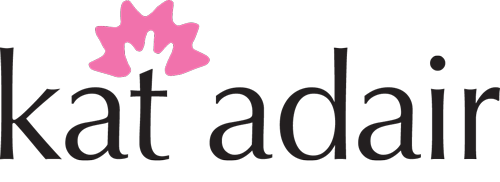Closeup of one of the wax models - needs cleanup!
Okay, I wish I had more pictures for this post. But once you make all of those little wax models, you then have to INSPECT them to find the ones that are pretty close to perfect. After talking with a couple of jewelry experts this week, I learned that there is a fine line between making the wax perfect, or making the wax "close enough." Either way, the casting will have to be cleaned up.
So I opted for "close enough." Not really my style, since I'm a perfectionist. But the nice thing about casting metal is that if it doesn't work, you can melt it down and cast it again.
Now it's time to mount these little guys onto a stick of wax called a "sprue," making a tree formation so that multiples can be cast simultaneously. The sprue is mounted on a rubber base, which is removed before the tree goes into a kiln to melt out the wax. You've seen my tree, but check out this tree from the Kerr brochure...
Photo from Kerr's casting brochure showing wax tree with stones to be cast in place
The other thing I learned from the Kerr brochure is that stones can be cast in place! I'm guessing these diamond were mounted in the wax models, then cast. Now I'll be out "chasing squirrels" in my quest to find out how this is done. (Wow, couldn't wait on that one...here's a link.)
Kerr is a company that makes waxes, "investment," and tools for dental work, but it's also used for jewelry. Since I haven't bothered to read the manual for my casting machine (I'm a Mac user, and we don't "do" manuals...), I've had to research how this all comes together. There is information out there for making wax models. There is information about mixing the "investment" (heat-resistant plaster-type material), there is information about burning out the metal flask. Then you have to know how your casting machine works.
Gosh, it makes me miss that cute little Jewelcast machine from my first post.
Selection of perforated flasks from Pepe Tools
So the next step is to "invest" the wax tree. I'll prepare the perforated flask, then I'll apply a spray that will reduce bubbles on the wax models, mix the investment, vacuum the bubbles out, then pour it in. Seems easy enough. Then I learn that preparing the investment and burning out the flask will take about ten hours. That was unexpected! Agh...I guess I'll spend Black Friday babysitting my kiln. That's okay. I've got a couple of Etsy orders to fill.
You might be looking at the picture of perforated flasks to the right, wondering how in the world one might pour wet plaster into the flask without it flowing out. The answer? TAPE. Then it has to sit for a couple of hours before going into the kiln.
So more about that burnout schedule...and some information from Kerr. Looks like you hold the kiln temperature around 300°F for about an hour to melt out the wax, although another page I found on the internet recommends three hours. Then you ramp up the kiln to completely burn out any wax residue, then remove the flask while it's around 900°F – 1000°F, put it on the vacuum caster, and pour molten metal into the cavity.
Here's a link to their brochure that shows the burnout schedule. I'm using the middle-sized flask.
Anyway, back down to the studio to start preparing the flask...stay tuned!

